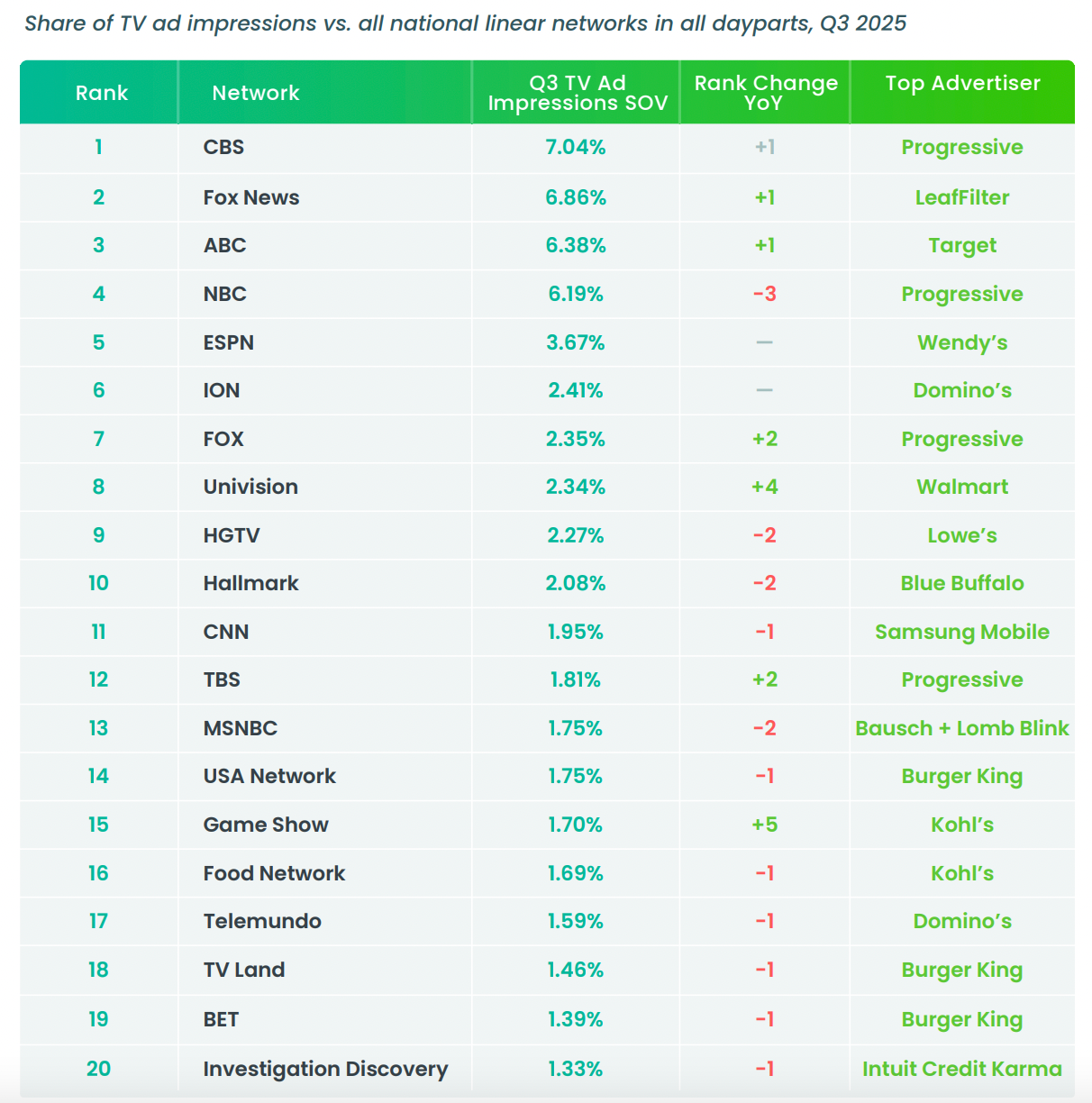iSpot: Q3 National Linear TV Ad Revenue Increases to $8.77 Billion
During a period of economic uncertainty, linear TV networks increased the total ad minutes in their schedules while national linear TV ad impressions fell

BELLEVUE, Wash.—Despite ongoing worries about the economy, new data from iSpot shows that national linear advertising revenue recorded a 4.2% increase in Q3 2025 versus a year earlier to $8.77 billion.
The data, which is based on an analysis of 1.7 trillion verified household TV ad impressions, also showed that total TV ad impressions dipped by 2.7% to 1.67 trillion YoY and that linear TV networks opted to include more total ad minutes, which rose by 2.4% year-over-year to 5.3 million. This follows an annual trend of increased ad time in Q3 and Q4 as more sports inventory becomes available.
The study also found that the NFL and college football both saw double-digit growth in Q3 TV ad impressions YoY, as the sport continues to take over weekend (and some weekday) viewing.
The findings also highlighted the importance of news. Nine of the top 20 programs by TV ad reach in Q3 were news-related (including morning shows).
Another notable finding is the fact that Spanish language programming continues to grow its reach YoY, from 4.4% of TV ad impressions in Q3 2024 to 4.7% in Q3 2025 (including a 10% jump from Univision alone).
The study also provided a detailed breakdown of networks by share of ad reach (HH):
The professional video industry's #1 source for news, trends and product and tech information. Sign up below.
George Winslow is the senior content producer for TV Tech. He has written about the television, media and technology industries for nearly 30 years for such publications as Broadcasting & Cable, Multichannel News and TV Tech. Over the years, he has edited a number of magazines, including Multichannel News International and World Screen, and moderated panels at such major industry events as NAB and MIP TV. He has published two books and dozens of encyclopedia articles on such subjects as the media, New York City history and economics.


